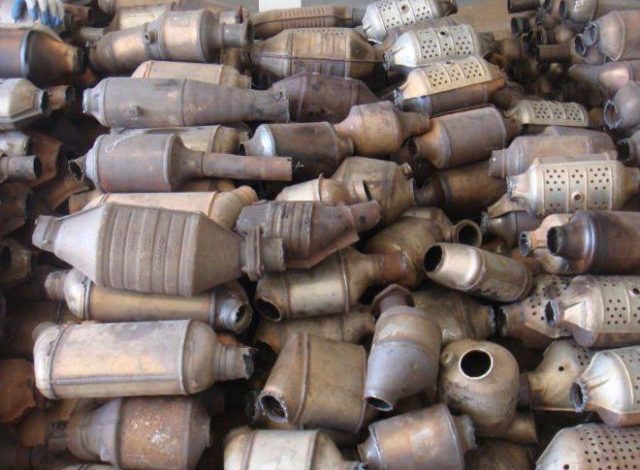Step by Step Process in Selling Your Catalytic Converter Scrap

There are several ways to sell your old catalytic converters. You can choose to sell them yourself or get help from a recycler. There are two primary options for selling your catalytic converters: to a recycler or a scrapyard. Both options have their advantages and disadvantages. Selling your converters for scrap means that you can earn money while recycling. On the other hand, selling your converter for scrap is a great way to support the environment and get rid of your old car.
Metals contained in a catalytic converter
The composition of a catalytic converter varies widely depending on the fuel and engine displacement type. It may be made up of purely Pt, a mixture of Pt, Pd, and Rh, or a combination of these metals. In the United States, most recycled catalytic converters are from vehicles manufactured ten to fifteen years ago. The recoverable amounts of Pt, Pd, and Rh in each converter can vary from a few grams in a small vehicle to as much as 12-15 grams in a large truck.
Catalytic converters are essential parts of any car’s exhaust system. While they are small, they contain a surprising amount of precious metals. Catalytic converters can fetch hundreds of dollars on the black market. That’s why recycling them is so important. Besides getting a reasonable price for the converter, you’ll be helping the environment simultaneously.
Grades of metals
The percentage of precious metals in a CAT converter depends on the combustion engine type and the car’s make and model. The number of precious metals required to meet emission standards will determine the value of spent CAT. The price of spent catalytic converters will depend on the commodity price of these metals worldwide. A CAT recycling facility will pay its customers according to the scrap value of the converters.
Besides selling used catalytic converters, you can also purchase purified metals from precious metal refineries. About 80% of the demand for precious grade metals comes from automobile manufacturing. Other uses of these metals include consumer electronics, jewelry, and nylon. As a result, catalytic converters are a good source of these metals. Therefore, reclaiming catalytic converter scrap is a great way to help the environment.
Dismantling a catalytic converter
The first step in selling your catalytic converter is identifying the unit type. Catalytic converters are made of a honeycomb-like structure that filters exhaust fumes and contain valuable metals. Inexperienced scrappers will likely remove the honeycomb from the converter before offering it to a scrap metal company. If you do not want to take the time to remove the honeycomb, you can contact a metal recycling provider.
You can search online or visit a local scrapyard to get a price for your catalytic converter. You can use a price list that gives you an idea of how much your catalytic converters are worth. Most buyers have a list of acceptable values for scrap, so check out what is available in your area. It is also helpful to take a picture of your catalytic converter to determine its worth.
Finding a buyer
There are several ways to find a buyer for your scrap catalytic converter. While visiting a junkyard or local scrap metal place is an easy option, you can also seek help online from a junkyard or recycler. The former option is probably the easiest, but you may find the process more difficult if you have extensive knowledge about catalytic converters. Online buyers need more information and may be unable to respond quickly to your needs.
When you find a scrap catalytic converter buyers, they will usually give you a quote based on the year, make, and model of your vehicle. While many cars have aftermarket catalytic converters, others have OEM ones. OEM converters are generally worth more, so check your serial number. This information will help you determine the most accurate quote. However, you may be disappointed by some companies’ lack of communication.



